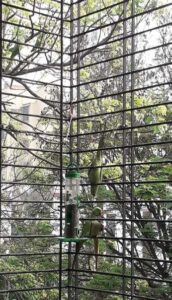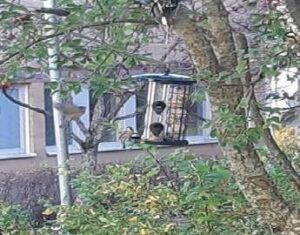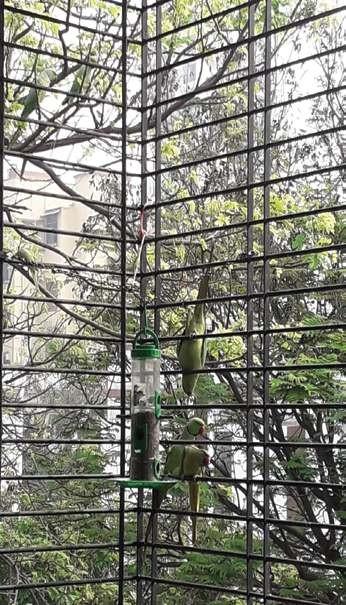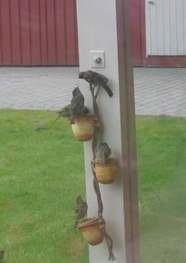‘Chal ud jaa re panchi ke ab ye des hua begaana’
If one pauses and realises the adverse impacts of urbanisation on Mother Nature, this Mohammed Rafi song will strike the right chords. Are we aware of their dwindling populations in urban settings? If we are, do we care? If we do, what we do about it?
Birds of a feather flock together. Metaphorically yes. Literally, it would be great if birds of different feathers flocked, together. Well, we need them more and more, and varied and diverse in our forests. Biodiversity or rather, ‘ornithodiversity’, if I may coin such a word.
A bird in hand is worth two in a bush, they say. Well, far from it, literally! Hundreds of them in the bushes and trees around us are what are needed and they not just have more worth than the ones trapped in cages inside homes but are happier and more thankful to us.
Urban creatures
If birds have fled cities and are more comfortable in the countryside and forests, it is good for them. But birds are also urban creatures and would like to live in harmony with Homo sapiens. They may make us more joyful as published research in the journal Ecological Economics (based on a survey of 26000 adults in 26 European countries), reveals.
It is sheer joy to see birds in Scandinavia in the spring and summer months, flocking to the hundreds of bird-feeders which people place in their gardens. Little ones – yellow, blue, orange, red, black, white – tweeting about in sunshine! Come autumn and winter, people here make it a habit to stock bird-food and ensure their bird-feeders are filled up regularly. As the study has found, the happiest Europeans are those who see the bird species daily.
I am talking of cities in countries like Norway and Sweden. Birds here are as happy as they are in the woods. We are talking of the Kuznets curve at work here. Seeing 14 additional bird species, it provides as much satisfaction as earning an additional USD 150 per month. In India, we too could avail this satisfaction by doing our bit to bring back ornithodiversity to our cities. At least the once ubiquitous.
If change is thrust upon us, we adapt
Interestingly, when we human species locked ourselves indoors and the streets were deserted in 2020 and 2021, birds seemed to make a comeback. One sensed an inverse correlation with the degree of air and noise pollution. Mother Nature signals, does not speak. It hints by hurting. As we slowly emerge out of the pandemic, there are changes to be made. They may turn out to be rewards in the medium-term.
Fashion your own bird-feeder from recyclable material and hang it in the balcony with compartments for grains andm water. Do this religiously every day. You could end up attracting birds never seen before.
 Bird feeders can be hung in balconies to attract birds
Bird feeders can be hung in balconies to attract birds
Cherished epithet
I recall my (late) wife Varshita handing over a cover with breadcrumbs or wheat grains in the morning and urge me to take the forest-route to the university and feed birds there. There were those who hated crow seagulls. We were remembered there as the bird-feeding couple. I set up a bird-feeder in the university campus in Karlstad.
 Photo by G Venkatesh, Karlstad
Photo by G Venkatesh, Karlstad
We read Wordsworth, Shelley, Keats, Longfellow and Tennyson and their love for the nature. Do we try to live them? Can we do so? It is never too late. Instead of remembering that sad Rafi song which I began this article with, perhaps, some other uplifting melodies may come to mind.


 Varshita Venkatesh Trondheim
Varshita Venkatesh Trondheim 